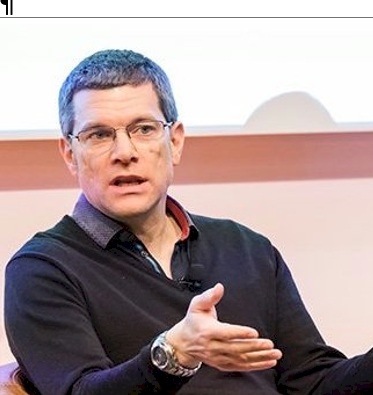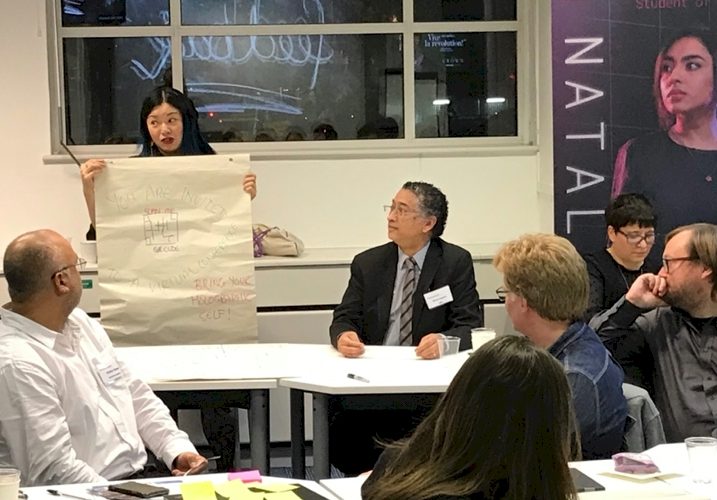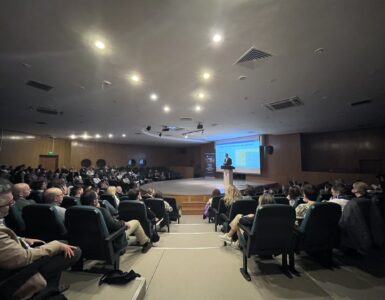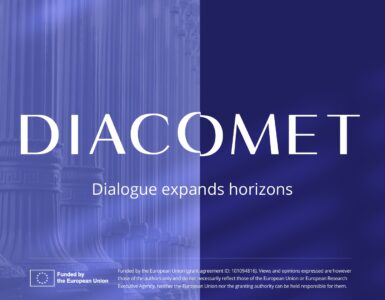Senior Educational Technologist Dominic Pates looks to a holographic future for higher education, finding a blooming of possibilities and a similar range of challenges.
Sometimes, just asking the right question at the right time can lead to so much more than just the answer sought.
A conversation I once had with an academic at City, University of London (City) in 2014, on the interface between AV technologies and the physical environment, was a lot more formative on the later direction of my work than I could possibly have imagined at the time. In a learning spaces drop-in session, she asked me if it was possible to bring a remote guest speaker into a class, having become used to chatting with sectoral colleagues via Skype in her office and wanting to be able to recreate this approach with her students in a seminar. I recalled all the clunky web conference calls I’d witnessed in the workplace prior to then, and considered that while it would be technically possible, it would likely be pretty disruptive as a learning experience. I imagined a future scenario, when the technology was sufficiently advanced and it could be made to feel as if the guest speaker were there in the room, where life-sized holograms could take the place of a wall-mounted web conferencing system and the final barrier between the distant and the co-located would appear as if fully removed.
Fast forward to February 2020, and I’ve delivered my third version of a workshop titled ‘The Holographic Academic’ at ISE in Amsterdam, the world’s largest AV show. The workshop, which introduces participants to the possibilities of holographic projection in higher education and asks them to consider the potential benefits and challenges that this might bring, accompanies a chapter I’ve just had published in a new Springer book titled ‘Emerging Technologies and Pedagogies in the Curriculum’. This is done via a series of ‘What If’ questions, designed as prompts for participants to imagine a range of possible futures. These prompts include such scenarios as academics being asked to deliver a lecture holographically at short notice, a university perfecting a technique for creating interactive holographic likenesses of long-dead experts, Extinction Rebellion stopping local academics from flying to major international conferences, and the creation of a global network of holographic projection centres with access to all faculty at major educational establishments.
The workshop has now been attended by roughly 150 people across three events, and it has been fascinating to see the kinds of ideas that participants have generated about the potential of holograms in educational contexts.
At the Association for Learning Technology 2019 conference in Edinburgh, we heard about a holographic Brian Cox appearing as a guest Physics lecturer, questions about how to measure student engagement, and whether an ‘MC’ would be needed in lectures to keep things moving. The likely enduring feature of a new version of the ‘sage on the stage’ came up, as did perceived environmental benefits of reducing academic travel, and the complexity of the technical infrastructure needed to link up a network of holographic centres. We also heard about a need for changing the design of lecture theatres, of reducing learning to ‘edutainment’, and the challenges of handling pastoral care holographically. We even saw the production of a draft ‘holo-quette’ guide, with an outline for recommended behavioural guidelines for this brave new educational method.
A meeting of London’s M25 Learning and Teaching Group uncovered issues around identity copyright, how academics would interact with the technology and their audiences in order to make the experience feel natural, as well as the emergence of a ‘holo-bot’ as a holographic demonstrator that could show lecturers how to convey presence and to teach in this way. The idea of a holobot also turned up in the ISE group discussions, only this time being a projection onto a physical robot that physically interacted with human speakers. Physics lecturers appeared at ISE too, although the group used artificial intelligence to bring Einstein back to life. They did struggle, however, with how his voice would be effectively emulated. One group conjured up an entire virtual university enabled by this technology that would give students freedom of movement to learn when and how they wished, while another group raised the prospect of ‘holographic cheating’, a form of identity fraud with students electing to attend class via holographic projection methods rather than actually turning up in person.
Holograms in higher education, then, clearly lead to as many questions as they provide answers.
Check out these links for more on holographs:
- Book chapter: ‘The Holographic Academic: Rethinking Telepresence in Higher Education’
- Blog from ALT on Holographic Academic workshop
- More from Dom on Medium
- More from Dom on Twitter

Author
Dominic Pates
Senior Educational Technologist (Relationship Lead)
Learning Enhancement & Development
City, University of London, UK
















